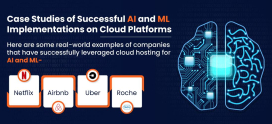
How AI Transforms Traffic Management
The sound of honking cars, the frustration of being stuck in traffic, the anxiety of missing an important appointment—does any of this sound familiar? If you’re like many of us, navigating through city traffic can feel like a never-ending struggle. You’re not alone in feeling overwhelmed. The good news is, help is on the way! Imagine a world where traffic flows smoothly, where getting from point A to B feels less like a chore and more like a breeze. Well, this isn’t just a dream anymore. Thanks to **Artificial Intelligence (AI)**, the way we manage traffic is about to change for the better.
Picture a smart traffic system that analyzes real-time data to optimize traffic signals, reduce congestion, and even provide you with alternate routes. Sound intriguing? In this article, we’ll explore how AI transforms traffic management, addressing your concerns and showing you the brighter side of technology in our daily commutes.
Understanding the Traffic Challenge
Before diving into the solutions that AI offers, let’s first acknowledge the challenges we face with traffic management. Have you ever found yourself sitting in a traffic jam during rush hour, watching the minutes tick away and wondering how it became this bad? It’s an all-too-common scenario that many of us face. Traffic congestion leads to wasted time, increased fuel consumption, and higher stress levels.
How AI Works in Traffic Management
So, how does AI really fit into this picture? Think of AI as a very smart traffic cop. Instead of just standing there directing traffic, it observes, learns, and makes real-time decisions. AI uses algorithms to analyze data from various sources, such as:
- Traffic cameras
- GPS data from vehicles
- Social media updates
- Weather reports
By combining this information, AI can predict traffic patterns and suggest the best routes. It works like having a personal travel guide that knows the best paths in real-time!
Smart Traffic Signals
One of the most visible applications of AI in traffic management is smart traffic signals. These signals can adapt their timing based on real-time traffic conditions. For example, if there’s an unusually high volume of cars on a certain street, the signal can extend the green light to ease congestion. This means fewer stops and less time spent idling in your car.
AI and Public Transportation
Imagine waiting for a bus and receiving updates that tell you exactly when it will arrive. This isn’t just a wishful thought—it’s a reality in many smart cities! AI plays a crucial role in enhancing public transportation systems by:
- Predicting ridership patterns
- Optimizing bus routes based on demand
- Improving punctuality with real-time tracking
These improvements create a more efficient public transportation system, enticing people to leave their cars at home, thus reducing overall traffic.
Enhanced Safety Features
AI isn’t just about convenience; it’s also about safety. Machine learning algorithms can analyze data from accidents to help cities identify high-risk areas. By utilizing this information, urban planners can implement safer road designs, improve signage, or adjust traffic signals to mitigate risks. Picture it as setting up a safety net that catches potential hazards before they become accidents!
Impact on Urban Planning
Incorporating AI into traffic management provides valuable insights for urban planners. By analyzing traffic data, planners can make informed decisions about future infrastructure developments. This could include:
- Designing new roads
- Identifying areas in need of better public transport
- Planning for pedestrian and bike-friendly pathways
Ultimately, AI helps shape cities that are more livable and less congested.
AI in Ride-sharing Services
Have you ever used a ride-sharing app? These platforms rely heavily on AI to optimize routes for drivers and passengers alike. By using historical data and real-time conditions, AI can match passengers with drivers more efficiently, significantly reducing wait times and improving the user experience. Imagine getting a ride with just a few clicks and knowing exactly when your driver will arrive—this is the power of AI at work!
Predictive Analytics and Congestion Management
AI’s predictive capabilities extend into congestion management as well. It can forecast where pinch points may occur based on past data and current conditions. By anticipating these issues, cities can implement preemptive measures to alleviate potential traffic jams. This proactive approach keeps our roads moving and helps maintain less stressful commutes.
Challenges and Limitations of AI in Traffic Management
While the advantages of AI in traffic management are compelling, it’s essential to remain aware of its challenges. What about privacy concerns? The collection of data from vast sources can raise questions about surveillance and data ethics. Additionally, how do we maintain the infrastructure required for these advanced systems?
Infrastructure Requirements
Implementing AI-driven traffic management requires considerable investment in both technology and infrastructure. Cities need robust systems to collect and process data, as well as continual updates to adapt to rapidly advancing technology. While the road may be bumpy, the destination—efficient traffic management—is worth the effort.
Future Prospects of AI in Traffic Management
As AI technology continues to evolve, the future of traffic management looks even brighter. We can anticipate fully integrated smart cities where vehicles communicate with traffic systems, continuously improving our travel experience. Imagine driving through a city where your car knows the best routes in real-time and avoids traffic without you ever lifting a finger!
Conclusion
Navigating through traffic today can be a daunting challenge, but with the transformational impact of AI, the tide is turning. From smart traffic signals to enhanced public transport systems, AI is working hard behind the scenes to make our roads safer and our commutes smoother. While there are challenges to consider, the benefits are undeniably promising. The future is indeed bright, and it’s time we embrace the change. So the next time you’re stuck in traffic, remember that help is on the horizon—intelligent help!
FAQs
What is AI traffic management?
AI traffic management involves using artificial intelligence technologies to analyze traffic patterns and optimize the flow of vehicles on roads, improving efficiency and safety.
How does AI optimize traffic signals?
AI optimizes traffic signals by using real-time data to adjust timing based on current traffic conditions, minimizing congestion and improving the flow of vehicles.
Can AI improve public transportation?
Yes, AI can enhance public transportation by predicting ridership patterns, optimizing routes, and providing real-time tracking to improve reliability and efficiency.
What role does AI play in accident prevention?
AI helps prevent accidents by analyzing data to identify high-risk areas and suggesting improvements in road design, signage, and timing of traffic signals.
What are the privacy concerns related to AI traffic management?
Privacy concerns stem from extensive data collection on mobility patterns, which can potentially lead to surveillance if not managed properly and transparently.
Is AI traffic management widely implemented?
While AI traffic management is still developing, many cities around the world are adopting these systems, particularly in urban environments with high congestion.
How does AI benefit ride-sharing services?
AI benefits ride-sharing services by optimizing routes for drivers and passengers, reducing wait times, and enhancing the overall user experience through real-time data analysis.









